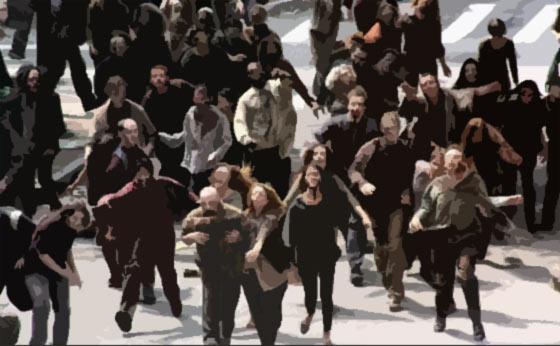Is It Safe Living Within 50 Miles Of 1-Million People After SHTF?
Over the years I’ve often addressed the general topic of population density versus one’s security, well-being, and ability to survive following a long lasting SHTF event. Let’s have a new look at the issue, but this time from the standpoint of living in a seemingly safe geographical location – except that you’re still within about 50 miles of a region with 1 million or more people… Heck, even 500K or 100K people, right?
The scenario is the following…
Let’s hypothetically say that you are living rural, or in a region of suburbia with a relatively low population density. You feel pretty safe. You may even be living in a very small town, or off the beaten path to the extent that it ‘feel’s like you’re far away from ‘the city’.
But here’s the flip side:
Within an approximate 40 minute drive there is either a city, or a population-dense metropolitan area of 1 million or more people. You and your neighbors may even commute into this region for work…
For your reference, here is a list of United States MSA (Metropolitan Statistical Areas) with 1 million or more people:
(source: statista.com)

Of note, there are 326 cities in the United States with 100,000 people or more.
(Wikipedia list)
The question:
So, you’re bugging-in. You’re staying put at your place. Will you be safe during a long-lasting SHTF event if within ~50 miles of a MSA or city region?
Yes, I know, your first concern would be the people in your own neighborhood and locality. Are they prepared? Maybe some, maybe not. However instead of that angle, lets discuss the ‘city folk’ if you will…the ‘Golden Horde’ as it has been called. Will it pose a threat?
To answer that question, you might consider the following in your decision matrix:
How severe is the SHTF event? Has it crippled essential services (obviously a huge factor)?
How long has the event been unfolding, and how long until these people ‘truly’ become desperate and reach a point of serious ‘unrest’?
What will the 1 million people do? Will they sit and wait for help, or for an ‘end’ to the event? Or will some of them take to the road? How many will stay and wait for help versus how many will hit the road?
For those who take to the road while they search for essential services and supplies, will they potentially make it to your region 50 miles away? Got enough gas? What about clogged roads?
Driving versus walking? Most people these days are pretty obese and probably can’t even walk a mile or two… Though some could make it 50 miles, probably a couple, or several days if they’re well equipped.
Note that bicycles will get you many miles in one day.
Geographical features are also a consideration. Mountain ranges and rivers would impede many.
A number of factors come into play on how far city folks will travel. The type of event, weather, available resources (food and water?), etc..
How far might they get in a vehicle or on foot, and would they even become a potential threat to where you specifically live?
Depending on the SHTF event, the mortality rate particularly within the MSA’s and city regions of the unprepared general population could conceivably be in excess of 25% in the short term without essential resources. Drastically worsening over time.
Would the chaos be mostly and only confined to the population-dense region (or city) itself? Therefore leaving you pretty safe and secure (apart from the discussion about your own locale)?
The notion of the ‘zombie hordes’ or Golden Hordes comes into play. Could it actually happen?
A MSB commenter once said,
“On 9/11 in NYC the Bridges & Tunnels were shutdown after the attack. Expect the same to happen in NYC again, as well as in NJ. Everything will be shutdown in a grid using the Interstates and major RT’s as the dividing lines.”
“The govt. has containment plans in case of a major event. Their plan is to grid out and isolate everyone in their grid. Thus preventing mass chaos in the non-affected areas. The NG, SP and local LE will be patrolling the dividing roads. Bottom line, you will be stuck in your grid zone until you are TOLD to leave. You will get a free trip on the FEMA bus to a safe area…”
Another commenter said “I believe that there is a normalcy bias that people believe that things will get back to normal when the government gets involved. By that time people will be, depending on the time of year, forced to stay where they live because it’s too hot or cold or fear of the unknown.”
If living within ~50 miles of a population-dense region, will you be in danger even while living relatively rural? What’s the cutoff? 25 miles? 100 miles? more? less?
Lets hear your opinion about the hypothetical of living pretty close to population density, but seemingly far enough away so as not to be part of that region… Is it ‘safe enough’? Any further considerations here?
If not, then ‘why’? If yes, then ‘why’?

